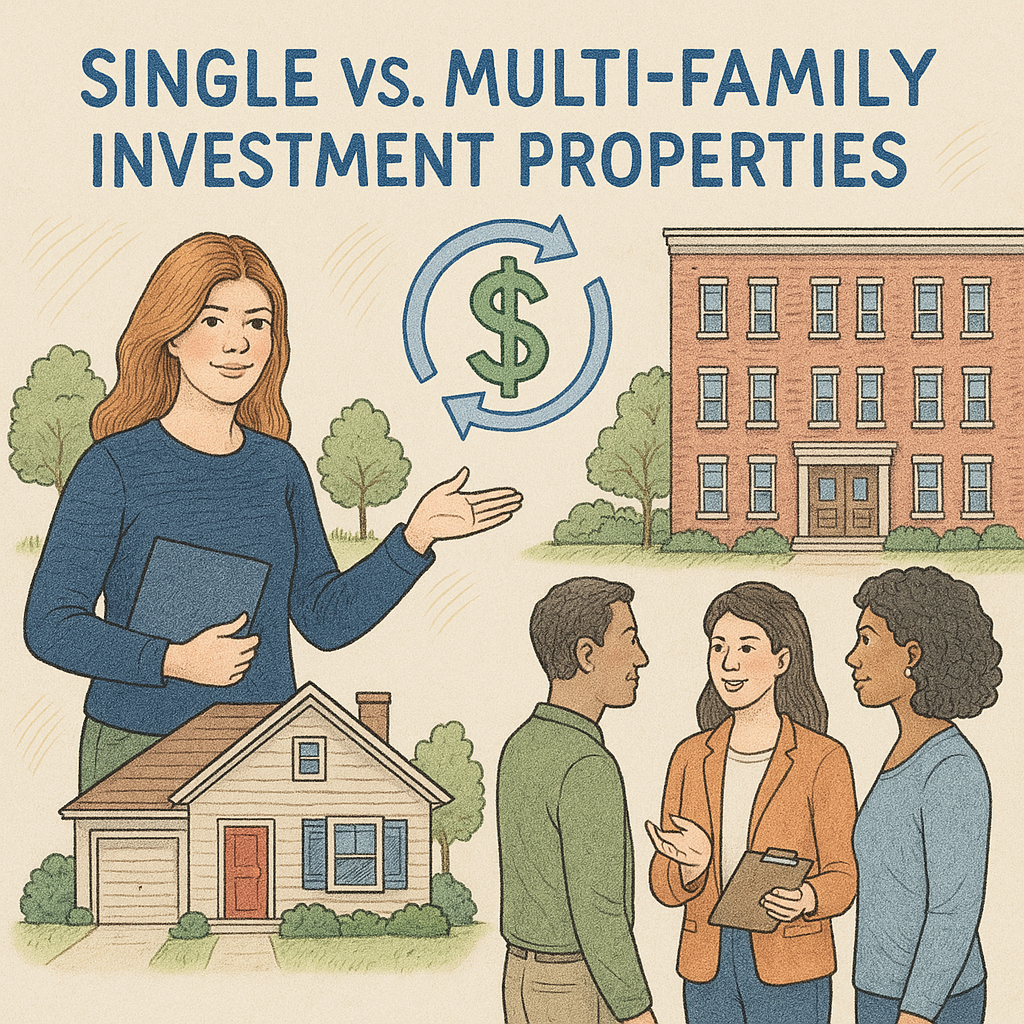HOME BUYING GUIDE: SINGLE-FAMILY VS. MULTI-FAMILY
Deciding between investing in single-family or multi-family real estate is a significant choice for anyone considering property investment in the Sacramento area.
Both property types come with their own set of advantages and challenges. Let's dive into the key aspects of each.

Single-family homes offer privacy and tend to appreciate more, while multi-family properties provide steadier cash flow through multiple tenants. Your personal financial goals, risk tolerance, and management preferences will guide which option suits you best.
Thorough research and understanding the local market trends are crucial in making an informed investment decision that balances potential returns and risks effectively.
- 🏡 Single-family homes offer high privacy and owner control.
- 📈 They have strong potential for value appreciation over time.
- 👪 Typically attract stable and longer-term tenants.
- 💰 Multi-family properties provide consistent revenue from multiple tenants.
- 📉 Economies of scale can lower per-unit operating costs in multi-family homes.
- 🛠️ Single-family owners bear full maintenance responsibility, which can be costly.
- 🏗️ Multi-family investments often have higher initial costs and complex management needs.
Single-family homes are stand-alone residential properties designed to house one family or household. They offer a specific set of advantages and considerations for potential buyers and investors.
Single-family homes come with a plethora of benefits, particularly for those seeking exclusivity and control over their investment.
- 🏡 Privacy and Control: As a standalone property, single-family homes offer the highest level of privacy. Owners have complete control over the property, including customization and landscaping.
- 📈 Appreciation Potential: These homes often experience appreciation in value based on local demand and neighborhood developments, offering long-term equity growth.
- 👪 Stable Tenant Base: Typically more appealing to families, the tenant base tends to be stable, with longer tenancy durations, reducing turnover costs.
- 💧 High Liquidity: When it comes time to sell, a large pool of potential buyers is available, making single-family homes easier to offload than more niche property types.
Despite their benefits, single-family homes also have drawbacks which can impact investment returns.
- 💸 Limited Income Streams: The biggest drawback is the dependency on a single tenant. Vacancies can lead to a complete stop in cash flow.
- 🛠️ Full Maintenance Responsibility: Owners are responsible for all the maintenance, which can become costly if significant repairs are needed.
- ⛏️ Higher Initial Costs: Often, there is a larger disparity in initial mortgage and property tax costs compared to multi-family properties.
Multi-family properties, which are residential buildings with multiple living units such as duplexes, triplexes, or fourplexes, also offer a unique set of advantages.
The primary allure of multi-family homes is their higher rental income potential, due to multiple revenue streams.
- 💰 Steady Cash Flow: These properties generate consistent revenue even if some units are vacant, thanks to multiple tenants.
- 📉 Economies of Scale: Operating costs per unit are lower, as expenses like maintenance and utilities can be distributed across multiple tenants.
- 📈 Potential for Appreciation: Strategic upgrades and renovations can significantly enhance the property’s value, allowing for appreciation over time.
- 🧮 Risk Diversification: With multiple tenants, the risk of total vacancy is mitigated, leading to more reliable ongoing revenue.
Investors must also weigh the challenges that come with managing multiple rental units.
- 🏗️ Higher Acquisition and Renovation Costs: These properties usually require a larger initial investment, both for the purchase and for necessary repairs and renovations.
- 🏢 Complex Management Needs: Effective management is crucial due to the complexity of handling multiple leases, tenants, and maintenance requests.
- 🔄 Higher Tenant Turnover: Multi-family properties often experience more frequent tenant turnover, leading to additional administrative work and potential vacancy periods.
- ⚖️ Legal and Liability Risks: The shared spaces and amenities increase the potential for liabilities, necessitating careful property management and legal arrangements.
So, which is the better investment choice in Sacramento? It all depends on individual goals, financial situation, and risk tolerance. Here are a few steps to help make an informed decision:
- 🔍 Identify Your Investment Goals: Consider whether you’re looking for regular cash flow or long-term appreciation. Multi-family properties cater to the former, while single-family homes are more suited to the latter.
- 📊 Assess Financial Capabilities: Evaluate the amount of upfront capital available, as multi-family homes require more substantial financing compared to single-family homes.
- 🏠 Consider Management Abilities: Determine whether you’re comfortable managing multiple tenants, as this often requires hiring a professional service.
- 🗺️ Research Market Trends: Look into Sacramento’s real estate trends. Areas experiencing significant growth or development might favor single-family appreciation.